The Economics and Statistics Division maintains archives of previous publications for accountability purposes, but makes no updates to keep these documents current with the latest data revisions from Statistics Canada. As a result, information in older documents may not be accurate. Please exercise caution when referring to older documents. For the latest information and historical data, please contact the individual listed to the right.
<--- Return to Archive
For additional information relating to this article, please contact:
February 27, 2023SURVEY ON BUSINESS CONDITIONS: Q1 2023 Statistics Canada has conducted its eleventh iteration of the Canadian Survey on Business Conditions. In January and early February, Statistics Canada surveyed businesses to collect information on businesses' expectations, obstacles, plans and practices.
The results reported here are a selection of the impacts found for Nova Scotia businesses, by industry, by size of business (measured by number of employees), by age of business and by urban or rural location. There are comparisons of the Nova Scotia average (all industries, ages, sizes, locations) with the national and provincial averages. The horizontal axis in all charts measures the share of businesses reporting each outcome. The total for many outcomes does not add to 100% of respondent businesses as many replied that the outcome was not applicable in their circumstances.
Future outlook over the next 12 months
In Nova Scotia, 28.1% of businesses were very optimistic about the next 12 months; a further 46.8% were somewhat optimistic, 10.0% were somewhat pessimistic and 3.8% were very pessimistic. Optimism was higher in Nova Scotia than the national average. Business optimism was higher in Atlantic Canada, Quebec, Manitoba and Saskatchewan. Businesses in Ontario had a more pessimistic future outlook.

Business expectations for the next three months
The outlook for employment was stable for 80.0% of Nova Scotia businesses in the next three months. Rising employment is expected among 14.8% of Nova Scotia businesses while declining employment is expected by 5.2% of Nova Scotia businesses.
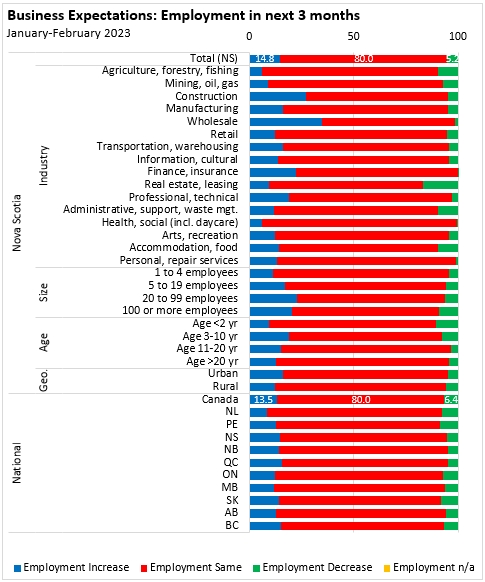
54.9% of Nova Scotia businesses expect stable job vacancies (50.1% nationally) while 6.2% expect rising job vacancies and 5.5% expect falling vacancies. Expectations of rising vacancies were more prevalent in Nova Scotia's administrative support/waste management/call centre industries. Across Canada, 8.0% of businesses expect rising job vacancies and 6.0% expect falling vacancies.
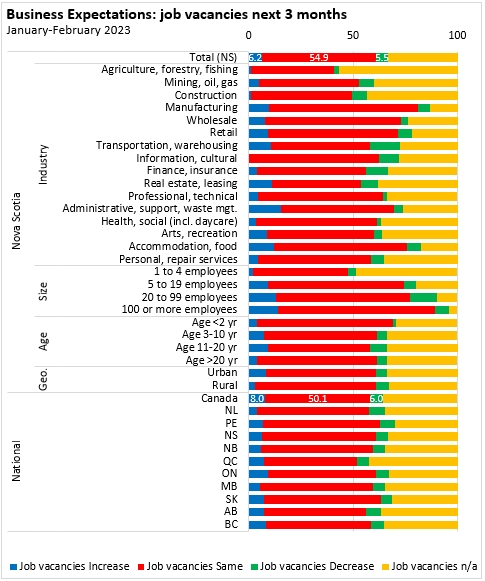
83.4% of Nova Scotia businesses expect stable or rising sales while 11.7% expect a decline. These expectations were stronger than those reported in the previous quarter.

Rising prices were expected by 29.9% of Nova Scotia businesses while 60.4% expected stable prices. Only 3.6% expected price declines. Rising prices were notably more widely expected in manufacturing, wholesale, retail and accommodation/food service industries.
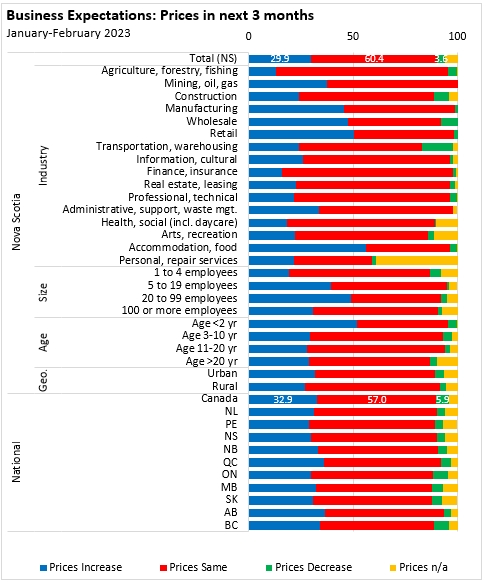
66.2% of Nova Scotia businesses expected stable demand while 23.5% expected a rise in demand and 10.2% expected a fall in demand. Rising demand is more widely expected among Nova Scotia's health/social (including daycare), construction, real estate/leasing and arts/recreation businesses.
Across Canada, rising demand is expected by 21.4% of businesses while falling demand is expected by 15.8%.
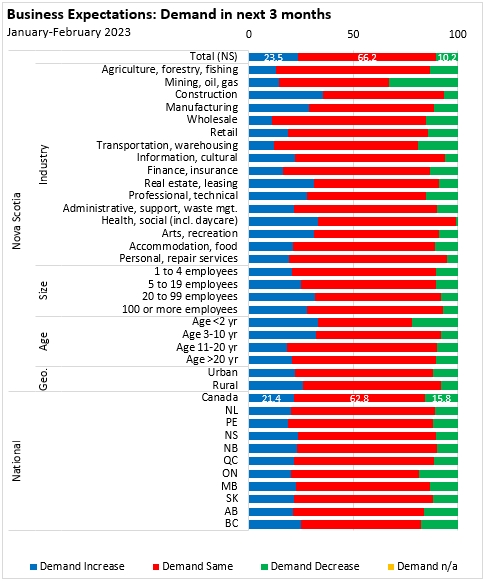
Business profitability is expected to remain the same for 55.5% of Nova Scotia businesses in the next three months while 12.3% expect rising profitability and 28.0% expect decreasing profitability. Rising profitability is expected more in Nova Scotia's professional/technical services businesses. Decreasing profitability expectations were more prevalent in Nova Scotia's accommodation/food service and agriculture businesses.
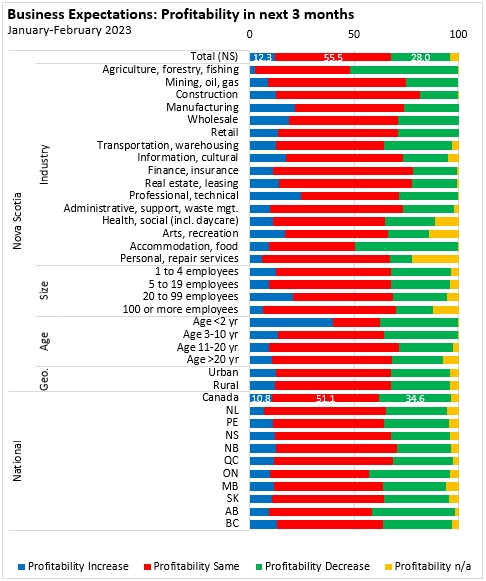
Obstacles for businesses
As part of the Survey of Business Conditions, businesses were asked about their obstacles. 17.3% of Nova Scotia businesses reported no substantial obstacles expected in the next three months (up from the previous quarter). Businesses in Nova Scotia's health/social and finance/insurance industries were more likely to report no substantial obstacles. Across Canada, 16.6% of businesses reported no obstacles.
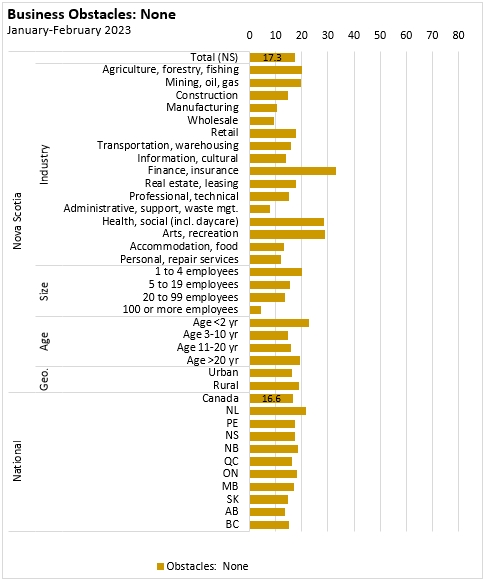

Cost factors were among the most commonly cited obstacles by Nova Scotia businesses, including rising inflation (60.7%) rising input costs (43.1%), insurance costs (35.7%), transportation costs (33.3%) and higher real estate/property tax costs (21.4%).
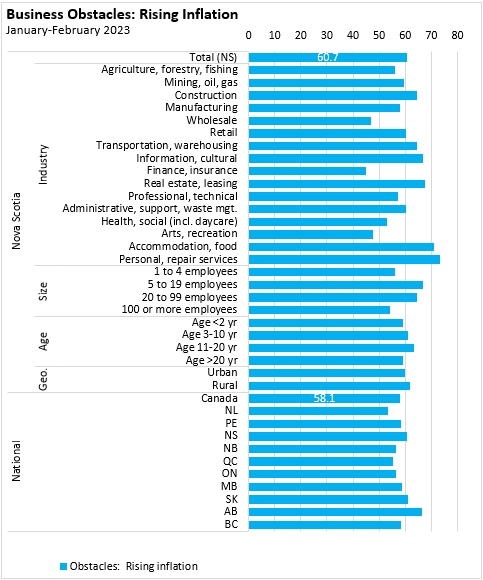
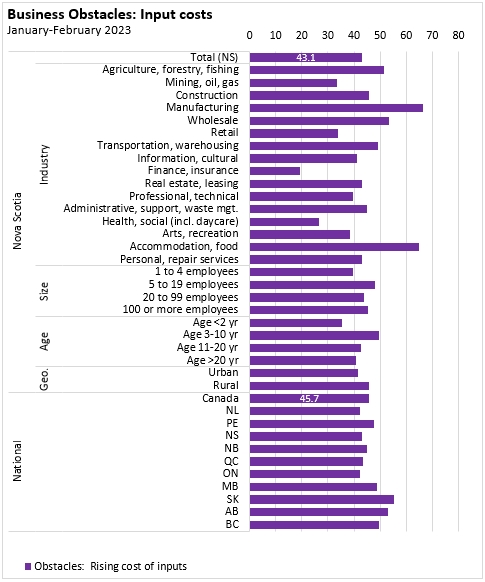
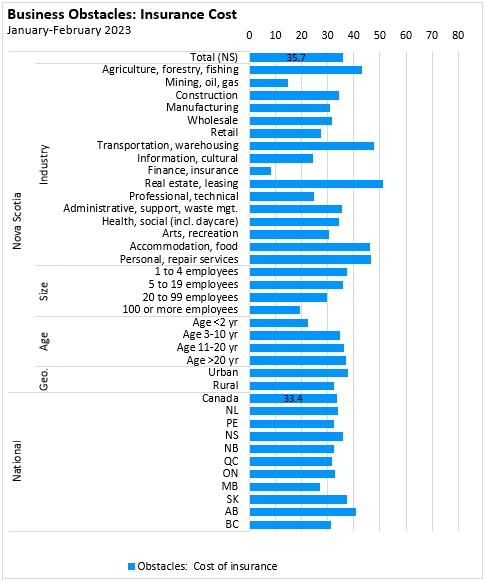
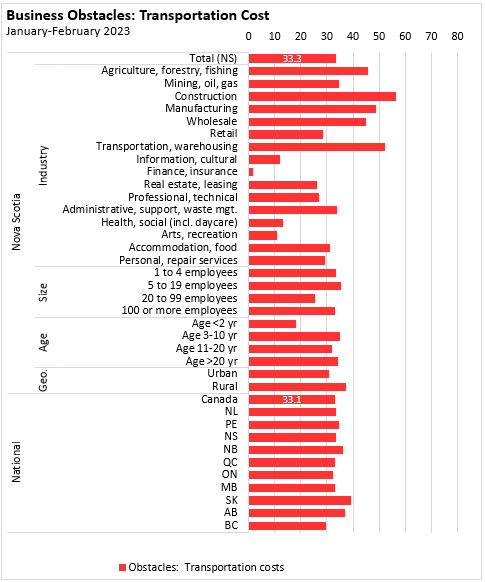

Rising interest rates and debt costs were cited as an obstacle by 38.4% of Nova Scotia businesses (40.2% nationally). This obstacle was more widely cited by real estate/leasing as well as manufacturing. Despite more obstacles from rising interest rates and debt service costs, financing was cited as an obstacle by just 8.1% of Nova Scotia businesses (primarily those that were under 2 years in operation). Managing cash flow was an obstacle noted by 20.1% of Nova Scotia businesses - particularly among those in accommodation/food services.
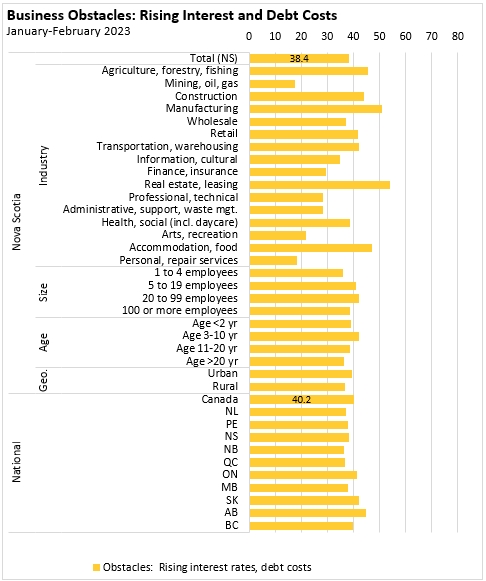
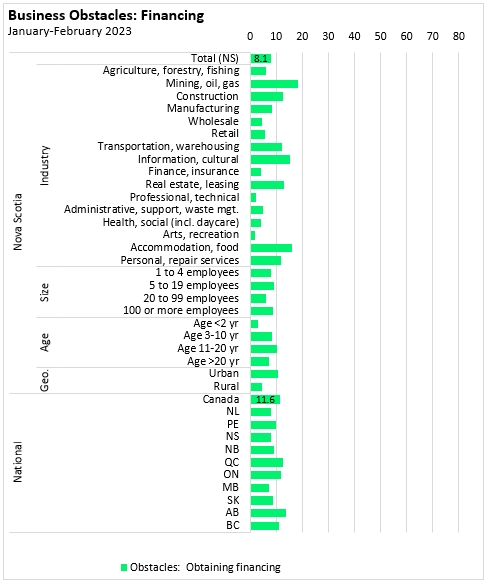
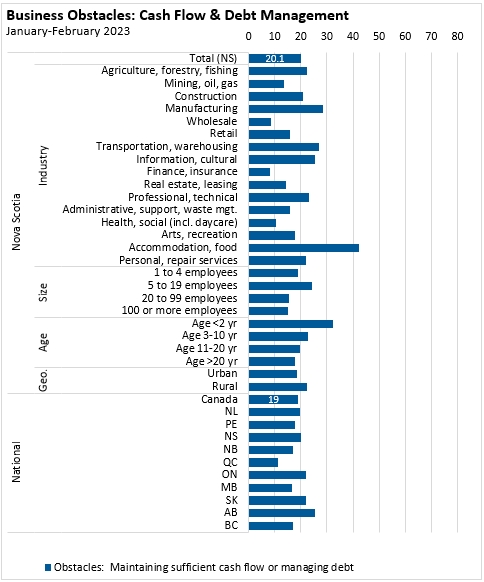
Labour shortages were noted as obstacles for 33.8% of Nova Scotia businesses. Recruiting skilled employees (34.5%) was a more commonly-noted obstacle than retaining skilled employees (28.2%).
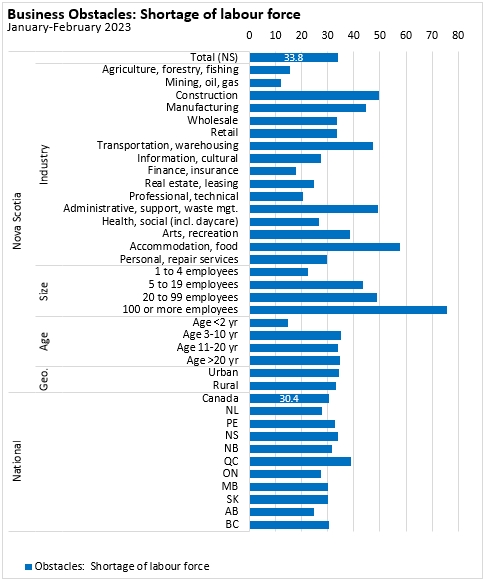
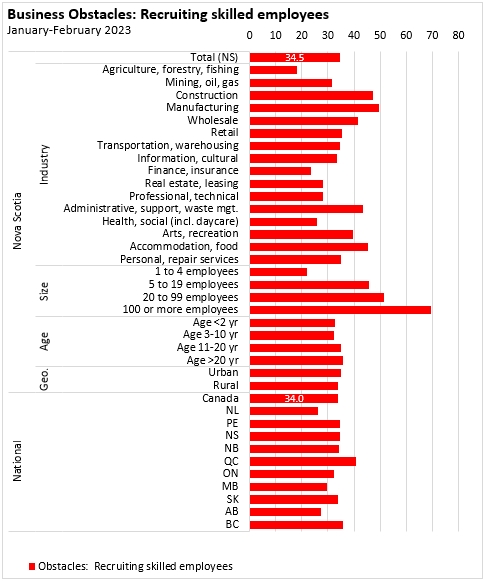
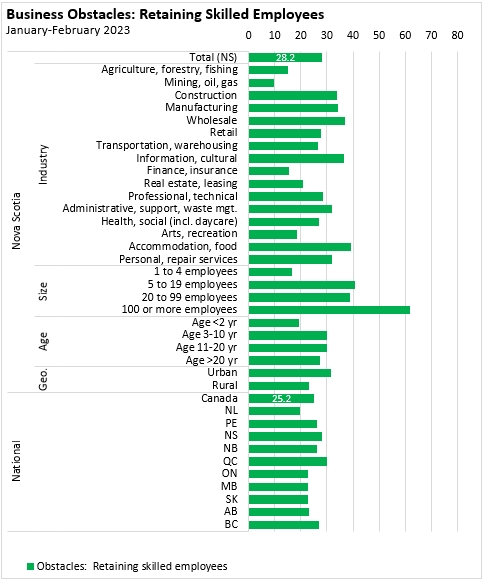
Supply chain issues were noted as an obstacle by 29.3% of Nova Scotia businesses (26.3% nationally). Domestic input sourcing was noted as a challenge for 23.8% of Nova Scotia businesses while international input sourcing was an obstacle for 9.1%. Maintaining inventory levels was an obstacle for 12.2% of Nova Scotia businesses (notably retail and accommodation/food).
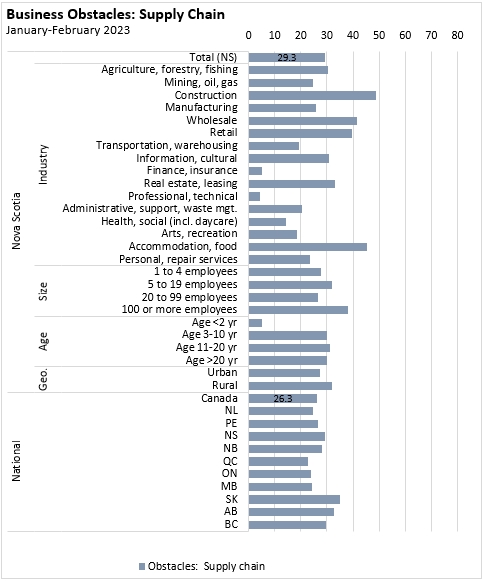
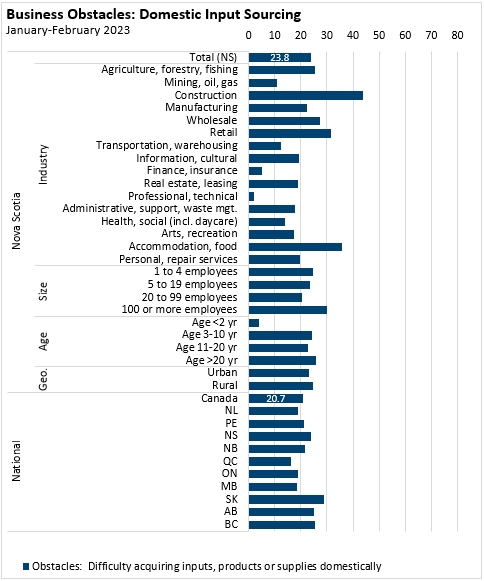
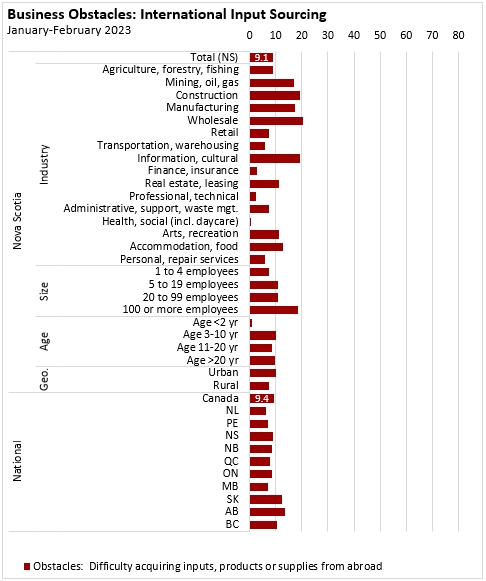
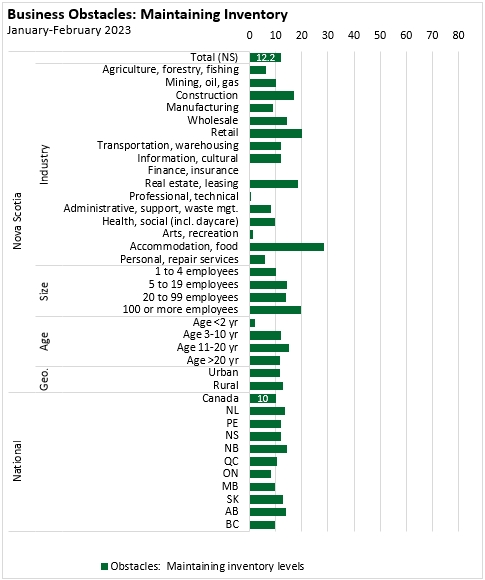
Insufficient demand (10.4%) and increasing competition (11.5%) were less commonly cited as obstacles for Nova Scotia businesses than fluctuating demand (21.8%).
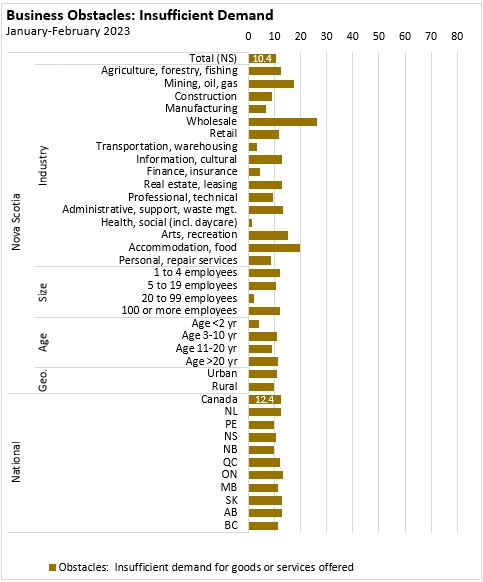
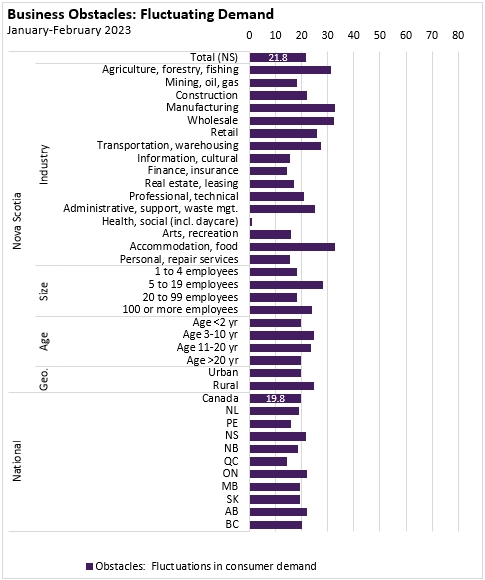
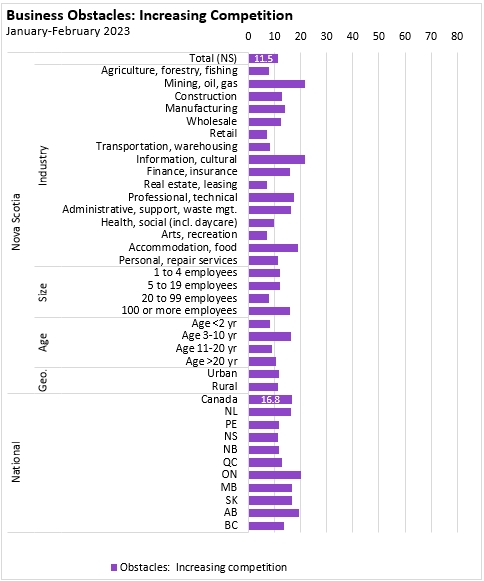
Source: Statistics Canada. Table 33-10-0630-01 Future outlook over the next 12 months, fourth quarter of 2022; Table 33-10-0602-01 Business or organization expectations over the next three months, fourth quarter of 2022; Table 33-10-0603-01 Business or organization obstacles over the next three months, fourth quarter of 2022
<--- Return to Archive